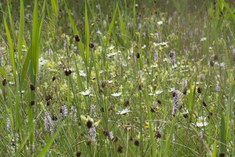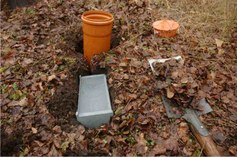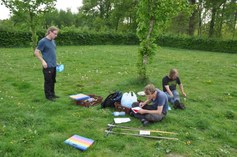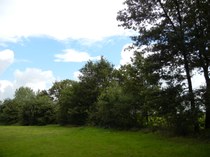Ecological restoration
Worldwide, biodiversity is deteriorating due to severe ecosystem fragmentation and high environmental pressure. Alarmed by the worldwide loss of biodiversity, several international initiatives are taken to gather knowledge on biodiversity conservation and ecosystem restoration. The EU realizes that conservation of habitats and biodiversity is important for the maintenance of ecosystem functions and the provision of ecosystem services. Member states are urged to take measures for maintaining and restoring natural habitats and need to stipulate conservation targets for different habitat types and species. In Flanders, minimum 25.000 ha new natural habitat has to be created to fulfil these targets, mainly on agricultural land. The restoration of natural habitats on former agricultural land faces major bottlenecks, however, and restoration has shown variable success.
We are building a knowledge centre of expertise on the topic of ecosystem restoration, from a fundamental and a practical point of view. The results of our research yield novel insights for ecosystem management and restoration and directly support the education of ecosystem managers and university students.
Current projects
- Changes in ecosystem (multi)functionality in semi-natural grasslands undergoing restoration management (more info)
- Connectivity of the Natura 2000 network across the Belgian-Dutch borders in the Meuse basin (more info)
- Development trajectories in below-above-ground plant communities driven by nutrient availability and soil biota (more info)
- Impact of bioavailable phosphorus on plant and soil microbial community interactions in grassland under restoration management (more info)
- Restoration of 6510 Lowland Hay meadows (Alopecurus pratensis, Sanguisorba officinalis) in the Sigma Areas along the Nete and Zenne: study of soil and hydrochemical characteristics (more info)
- Restoration of species-rich vegetation types via P mining (more info)
- Woody networks in agricultural landscapes: floristic diversity, conservation and management scenarios (more info)
Finished projects
- Changes in bioavailability of phosphorus following afforestation of agricultural land (more info)
- Ecosystem development and pollutant cycling on buffer dikes constructed with dredged material (more info)
- Effects of tree species’ litter and root decomposition products on the mobility of Cd and Zn in sandy soils (more info)
- Forest understories: integrating below- and aboveground biotic interactions (more info)
- Impact of a high density willow cover on the mobility and bioavailability of trace elements in contaminated dredged sediment (more info)
- Impact of bioavailable phosphorus on plant and soil microbial community interactions in grassland under restoration management (more info)
- Impact of hemiparasitic plants on grassland communities and biogeochemistry (more info)
- Phytoextraction of phosphorus: an attainable measure for nature development? (more info)
- Recovery potential of forest plant communities on phosphate enriched farmland (more info)
- Research on the P bottleneck for restoration of lowland meadows and other grassland types (more info)
- Scenarios of topsoil removal and P mining for habitat restoration in Smeetshof (more info)
- Seed ecology of common juniper (Juniperus communis) (more info)
- The P bottleneck in the vegetation development towards species-rich grasslands in Fondatie-Heernisse (more info)
- The effect of phosphorous bioavailability on the recovery of plant communities in post-agricultural forests (more info)
- Tree species effect on Cd and Zn mobility after afforestation of contaminated soils (more info)
- Restoration of species-rich grasslands: do's and don'ts for managers (more info)



